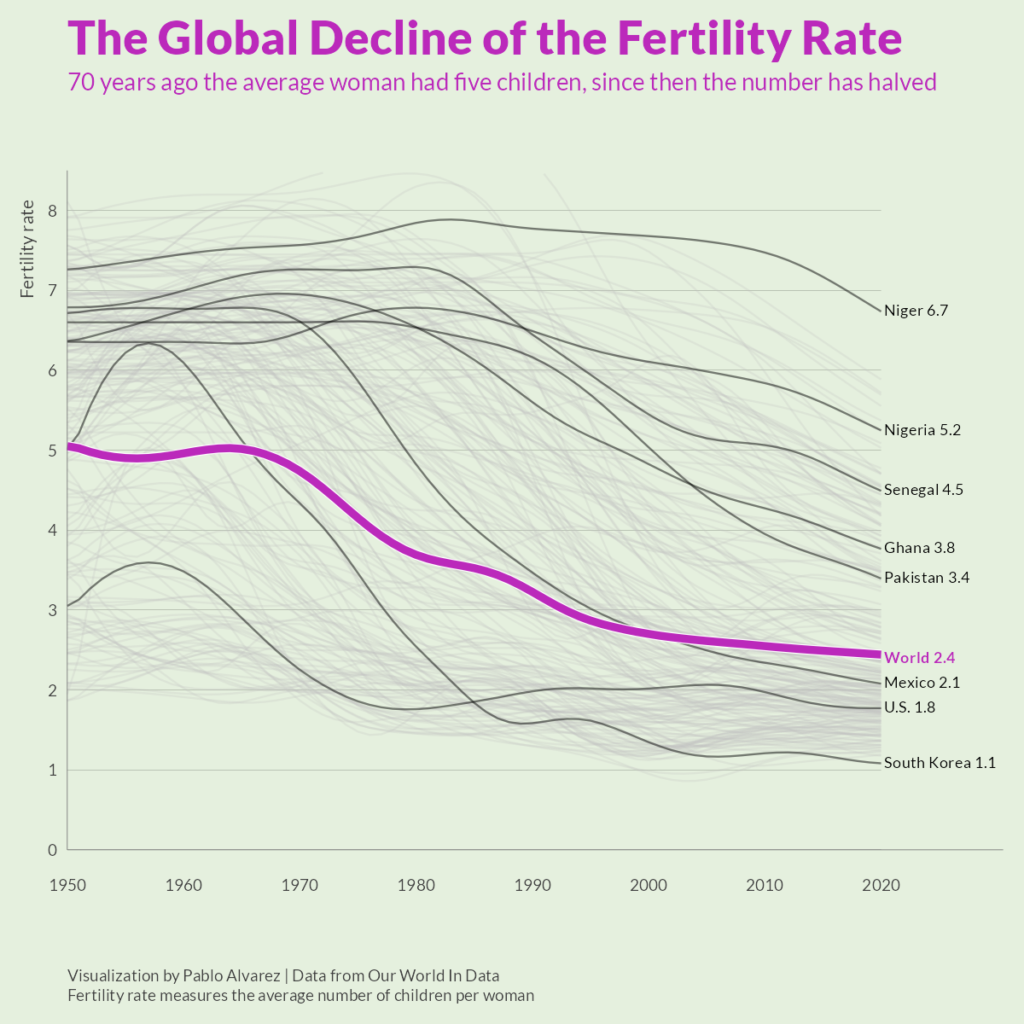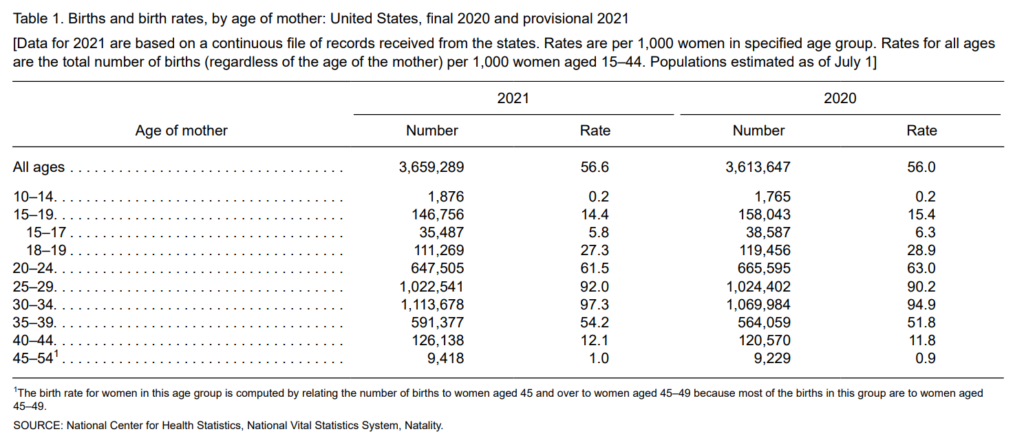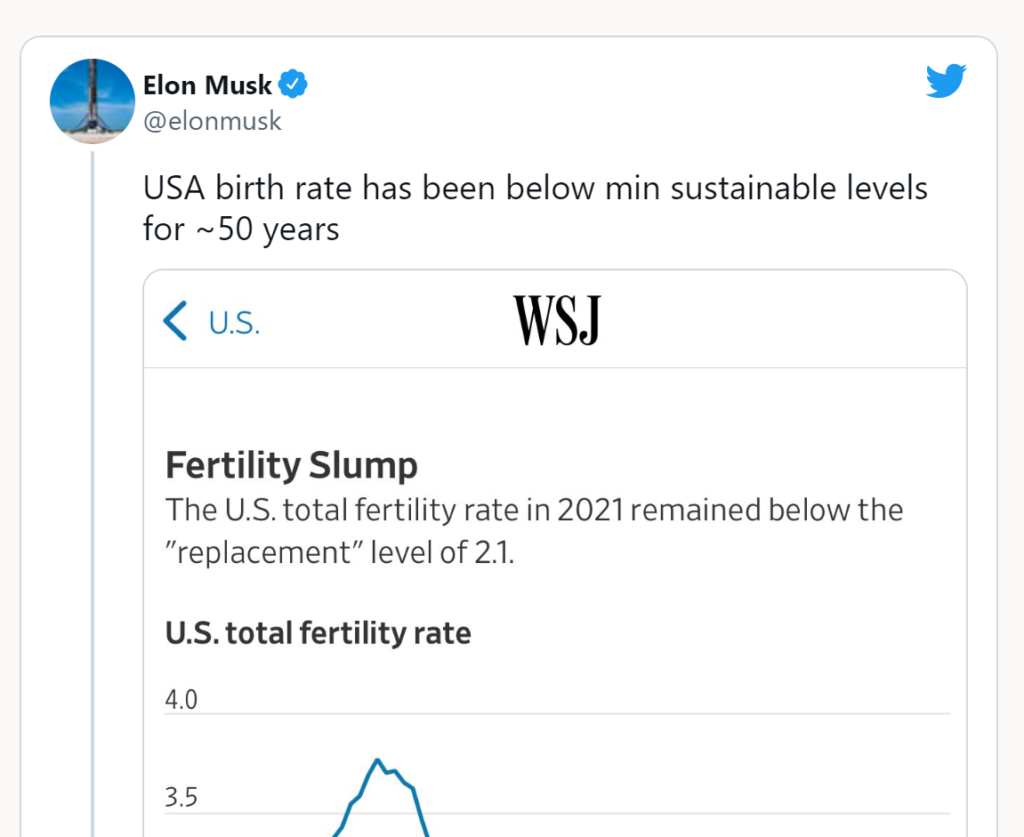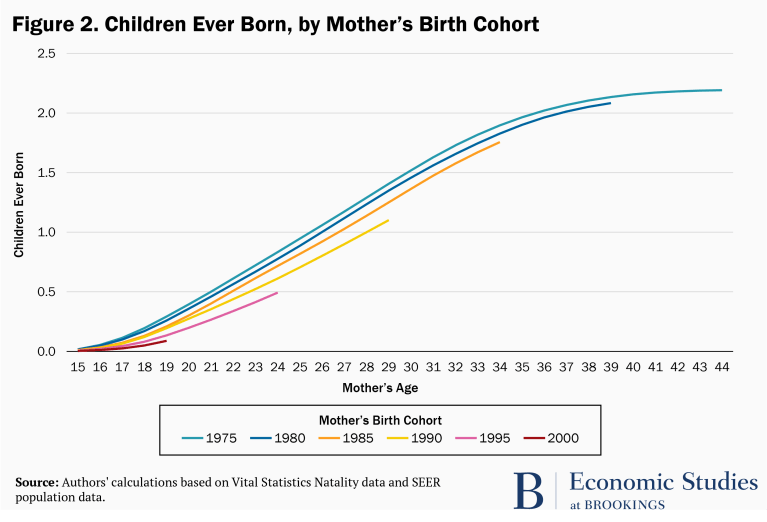Link: https://www.dailymail.co.uk/health/article-11628235/Whats-baby-bust.html
Graphic:

Excerpt:
Fertility in the US has long been falling. A half-century ago in 1970, the average woman was having 2.39 children over her entire life-span.
In 1920 – a full century ago – the rate was at 3.17. Earliest available data from 1800 puts the rate at 7.04.
The Census Bureau predicts there will be 94.7million Americans over the age of 65 by 2060, accounting for 23 percent of the nation’s population. In 2020, the most recent Census, 56million Americans were over 65 – accounting for just 17 percent of the population.
A half-century ago in 1970, seniors made up around 10 percent of the US population.
This puts an excess burden on social programs like Medicare and Social Security, as this portion of the population pulls away its resources but does not pay into them.
Author(s): MANSUR SHAHEEN DEPUTY HEALTH EDITOR FOR DAILYMAIL.COM
Publication Date: 16 January 2023
Publication Site: Daily Mail UK











